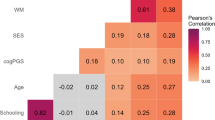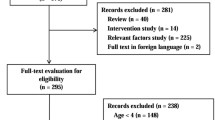Abstract
Human populations show remarkable variation in the sex ratio at birth which is believed to be related to the parental condition. In the present study, the global variation of sex ratio at birth (SRB, proportion of male offspring born) was analyzed with respect to indirect measure of condition, the intelligence quotient (IQ). IQ correlates strongly with lifespan across nations, which makes it a good indicator of health of the large populations. Relation between three standard measures of average national IQ and SRB was studied using multiple linear regression models. Average national IQ was positively correlated with SRB (r = 0.54 to 0.57, p < 0.001). Further, IQ emerged as a powerful predictor of SRB after controlling for the effects of all the known covariates like fertility, maternal age, polygyny prevalence, wealth, son preference, latitude, low birth weight, and neonatal mortality in the regression models. These results suggest that the striking variation of offspring sex ratio across nations could be caused in part by the difference in general condition of populations.

Similar content being viewed by others
References
Almond D, Edlund L (2007) Trivers–Willard at birth and one year: evidence from US natality data 1983–2001. Proc Biol Sci 274(1624):2491–2496
Anderson NH (1961) Scales and statistics: parametric and nonparametric. Psychol Bull 58:305–316
Arden R, Gottfredson LS et al (2009a) Does a fitness factor contribute to the association between intelligence and health outcomes? Evidence from medical abnormality counts among 3654 US Veterans. Intelligence 37(6):581–591
Arden R, Gottfredson LS et al (2009b) Intelligence and semen quality are positively correlated. Intelligence 37(3):277–282
Barber N (2004) Sex ratio at birth, polygyny, and fertility: a cross-national study. Biodemography Soc Biol 51(1):71–77
Boklage CE (2005) The epigenetic environment: secondary sex ratio depends on differential survival in embryogenesis. Hum Reprod 20(3):583–587
Bruckner T, Catalano R (2007) The sex ratio and age-specific male mortality: evidence for culling in utero. Am J Hum Biol 19(6):763–773
Byrne J, Warburton D et al (1987) Male excess among anatomically normal fetuses in spontaneous abortions. Am J Med Genet 26(3):605–611
Cagnacci A, Renzi A et al (2003) The male disadvantage and the seasonal rhythm of sex ratio at the time of conception. Hum Reprod 18(4):885–887
Cameron EZ (2004) Facultative adjustment of mammalian sex ratios in support of the Trivers–Willard hypothesis: evidence for a mechanism. Proc Biol Sci 271(1549):1723–1728
Cameron EZ, Dalerum F (2009) A Trivers–Willard effect in contemporary humans: male-biased sex ratios among billionaires. PLoS One 4(1):e4195
Catalano RA (2003) Sex ratios in the two Germanies: a test of the economic stress hypothesis. Hum Reprod 18(9):1972–1975
Catalano R, Bruckner T et al (2005) Fetal death sex ratios: a test of the economic stress hypothesis. Int J Epidemiol 34(4):944–948
Catalano R, Bruckner T et al (2006) Exogenous shocks to the human sex ratio: the case of September 11, 2001 in New York City. Hum Reprod 21(12):3127–3131
Catalano R, Ahern J et al (2009) Gender-specific selection in utero among contemporary human birth cohorts. Paediatr Perinat Epidemiol 23(3):273–278
Chambliss R (1949) The geographic factor in the human sex ratio at birth. Soc Forces 28(2):190–195
Cramer JS, Lumey LH (2010) Maternal preconception diet and the sex ratio. Hum Biol 82(1):103–107
Cronk L (2007) Boy or girl: gender preferences from a Darwinian point of view. Reprod Biomed Online 15:23–32
Davis DL, Gottlieb MB et al (1998) Reduced ratio of male to female births in several industrial countries: a sentinel health indicator? JAMA 279(13):1018–1023
Eppig C, Fincher CL et al (2010) Parasite prevalence and the worldwide distribution of cognitive ability. Proc Biol Sci 277(1701):3801–3808
Falkner FT, Tanner JM (1986) Human growth: a comprehensive treatise. Plenum Press, New York
Fox J (1991) Regression diagnostics. Sage Publications, Newbury Park, Calif
Fujita M, Roth EA et al (2012) Low serum vitamin A mothers breastfeed daughters more often than sons in drought-ridden northern Kenya: a test of the Trivers and Willard hypothesis. Evol Hum Behav 33(4):357–364
Fukuda M, Fukuda K et al (1998) Decline in sex ratio at birth after Kobe earthquake. Hum Reprod 13(8):2321–2322
Gibson MA, Mace R (2003) Strong mothers bear more sons in rural Ethiopia. Proc Biol Sci 270(1):S108–109
Gomendio M, Malo AF et al (2006) Male fertility and sex ratio at birth in red deer. Science 314(5804):1445–1447
Grant VJ (2007) Could maternal testosterone levels govern mammalian sex ratio deviations? J Theor Biol 246(4):708–719
Grant VJ, Irwin RJ (2005) Follicular fluid steroid levels and subsequent sex of bovine embryos. J Exp Zool A Comp Exp Biol 303(12):1120–1125
Grant VJ, Irwin RJ et al (2008) Sex of bovine embryos may be related to mothers' preovulatory follicular testosterone. Biol Reprod 78(5):812–815
Hardy I (2002) Sex ratios: concepts and research methods. Cambridge University Press, Cambridge
Helle S, Helama S et al (2008) Temperature-related birth sex ratio bias in historical Sami: warm years bring more sons. Biol Lett 4(1):60–62
Helle S, Helama S et al (2009) Evolutionary ecology of human birth sex ratio under the compound influence of climate change, famine, economic crises and wars. J Anim Ecol 78(6):1226–1233
Hesketh T, Xing ZW (2006) Abnormal sex ratios in human populations: causes and consequences. Proc Natl Acad Sci U S A 103(36):13271–13275
Hopcroft RL (2005) Parental status and differential investment in sons and daughters: Trivers–Willard revisited. Social Forces Social Forces 83(3):1111–1136
James WH (1971) Cycle day of insemination, coital rate, and sex ratio. The Lancet 297(7690):112–114
James WH (1980) Gonadotrophin and the human secondary sex ratio. Br Med J 281(6242):711–712
James WH (1986) Hormonal control of sex ratio. J Theor Biol 118(4):427–441
James WH (1987) The human sex ratio. Part 1: a review of the literature. Hum Biol 59(5):721–752
Kolk M and Schnettler S (2012). Parental status and gender preferences for children: is differential fertility stopping consistent with the Trivers–Willard hypothesis? J Biosoc Sci. doi:10.1017/S0021932012000557
Lowe CR, McKeown T (1950) The sex ratio of human births related to maternal age. Br J Soc Med 4(2):75–85. doi:10.1136/jech.4.2.75
Lynn R (2006) Race differences in intelligence: an evolutionary analysis. Washington Summit Publishers, Augusta, GA
Lynn R, Mikk J (2009) National differences in intelligence and educational attainment. Intelligence 35(2):115–121
Lynn R, Vanhanen T (2006) IQ and global inequality. Washington Summit Publishers, Augusta, Ga
Mace R, Jordan F et al (2003) Testing evolutionary hypotheses about human biological adaptation using cross-cultural comparison. Comp Biochem Physiol A Mol Integr Physiol 136(1):85–94
Macmahon B, Pugh TF (1953) Influence of birth order and maternal age on the human sex ratio at birth. Br J Prev Soc Med 7(2):83–86
Marsal K, Persson PH et al (1996) Intrauterine growth curves based on ultrasonically estimated foetal weights. Acta Paediatr 85(7):843–848
Martin JA, Hamilton BE et al (2002) Births: final data for 2000. National vital statistics reports: from the Centers for Disease Control and Prevention, National Center for Health Statistics. National Vital Statistics System 50(5):1–101
Mathews F, Johnson PJ et al (2008) You are what your mother eats: evidence for maternal preconception diet influencing foetal sex in humans. Proc Biol Sci 275(1643):1661–1668
McClearn GE, Johansson B et al (1997) Substantial genetic influence on cognitive abilities in twins 80 or more years old. Science 276(5318):1560–1563
Moller H (1996) Change in male:female ratio among newborn infants in Denmark. Lancet 348(9030):828–829
Navara KJ (2009) Humans at tropical latitudes produce more females. Biol Lett 5(4):524–527
O'Brien R (2007) A caution regarding rules of thumb for variance inflation factors. Qual Quant 41(5):673–690
Parazzini F, La Vecchia C et al (1998) Trends in male:female ratio among newborn infants in 29 countries from five continents. Hum Reprod 13(5):1394–1396
Pierce A, Miller G et al (2009) Why is intelligence correlated with semen quality?: Biochemical pathways common to sperm and neuron function and their vulnerability to pleiotropic mutations. Commun Integr Biol 2(5):385–387
Pollet T, Nettle D (2010) No evidence for the generalized Trivers–Willard hypothesis from British and rural Guatemalan data. J Evol Psychol 8(1):57–74
Pollet TV, Fawcett TW et al (2009) Sex-ratio biasing towards daughters among lower-ranking co-wives in Rwanda. Biol Lett 5(6):765–768
Price B (1977) Ridge regression: application to nonexperimental data. Psychol Bull 84(4):759–766
Rindermann H (2007) The g-factor of international cognitive ability comparisons: the homogeneity of results in PISA, TIMSS, PIRLS and IQ-tests across nations. Eur J Personal 21(5):667–706
Rojansky N, Brzezinski A et al (1992) Seasonality in human reproduction: an update. Hum Reprod 7(6):735–745
Rushton JP (1995) Race, evolution, and behavior: a life history perspective. Transaction Publishers, New Brunswick, N.J., USA
Sameroff AJ, Seifer R et al (1987) Intelligence quotient scores of 4-year-old children: social-environmental risk factors. Pediatrics 79(3):343–350
Shieh Y-Y, Fouladi RT (2003) The effect of multicollinearity on multilevel modeling parameter estimates and standard errors. Educ Psychol Meas 63(6):951–985. doi:10.1177/0013164403258402
Song S (2012) Does famine influence sex ratio at birth? Evidence from the 1959–1961 Great Leap Forward Famine in China. Proc Biol Sci 279(1739):2883–2890
Stein AD, Barnett PG et al (2004a) Maternal undernutrition and the sex ratio at birth in Ethiopia: evidence from a national sample. Proc Biol Sci 271(3):S37–39
Stein AD, Zybert PA et al (2004b) Acute undernutrition is not associated with excess of females at birth in humans: the Dutch hunger winter. Proc Biol Sci 271(4):S138–141
Tamimi RM, Lagiou P et al (2003) Average energy intake among pregnant women carrying a boy compared with a girl. BMJ 326(7401):1245–1246. doi:10.1136/bmj.326.7401.1245
Teitelbaum MS (1970) Factors affecting the sex ratio in large populations. J Biosoc Sci 2:61–71
Templer DI, Arikawa H (2006) Temperature, skin color, per capita income, and IQ: an international perspective. Intelligence 34(2):121–139
United Nations Development Programme (2009) Human development report 2009: Overcoming barriers: human mobility and development. Available online at http://hdr.undp.org/en/media/HDR_2009_EN_Complete.pdf
United States Central Intelligence Agency (2011) The world factbook. Central Intelligence Agency, Washington, DC
Whiting JWM (1993) The effect of polygyny on sex ratio at birth. Am Anthropol 95(2):435–442
Wicherts JM, Dolan CV et al (2010) A systematic literature review of the average IQ of sub-Saharan Africans. Intelligence 38(1):1–20
World Bank (2011) World development indicators 2010. World Bank, Washington
World Health Organization (2011) Global health risks mortality and burden of disease attributable to selected major risks. World Health Organization, Geneva
Zorn B, Sucur V et al (2002) Decline in sex ratio at birth after 10-day war in Slovenia: brief communication. Hum Reprod 17(12):3173–3177
Acknowledgments
Opinions expressed here are solely those of the author and not necessarily of any institute, where the author was employed since the work was started in 2005. I would also disclose that this body of work was conducted at home as a hobby starting from the year 2005. I dedicate this research work to my loving wife Savitri and sweet daughter Adhya (Gubbi) for tolerating my indulgence in this work.
Funding
No funding to disclose.
Conflicts of interest
None declared.
Author information
Authors and Affiliations
Corresponding author
Additional information
Communicated by: Sven Thatje
Electronic supplementary material
Below is the link to the electronic supplementary material.
Supplementary File. 1
Raw data for all the variables used in this study. (XLS 109 kb)
Rights and permissions
About this article
Cite this article
Dama, M.S. Cognitive ability correlates positively with son birth and predicts cross-cultural variation of the offspring sex ratio. Naturwissenschaften 100, 559–569 (2013). https://doi.org/10.1007/s00114-013-1052-3
Received:
Revised:
Accepted:
Published:
Issue Date:
DOI: https://doi.org/10.1007/s00114-013-1052-3




